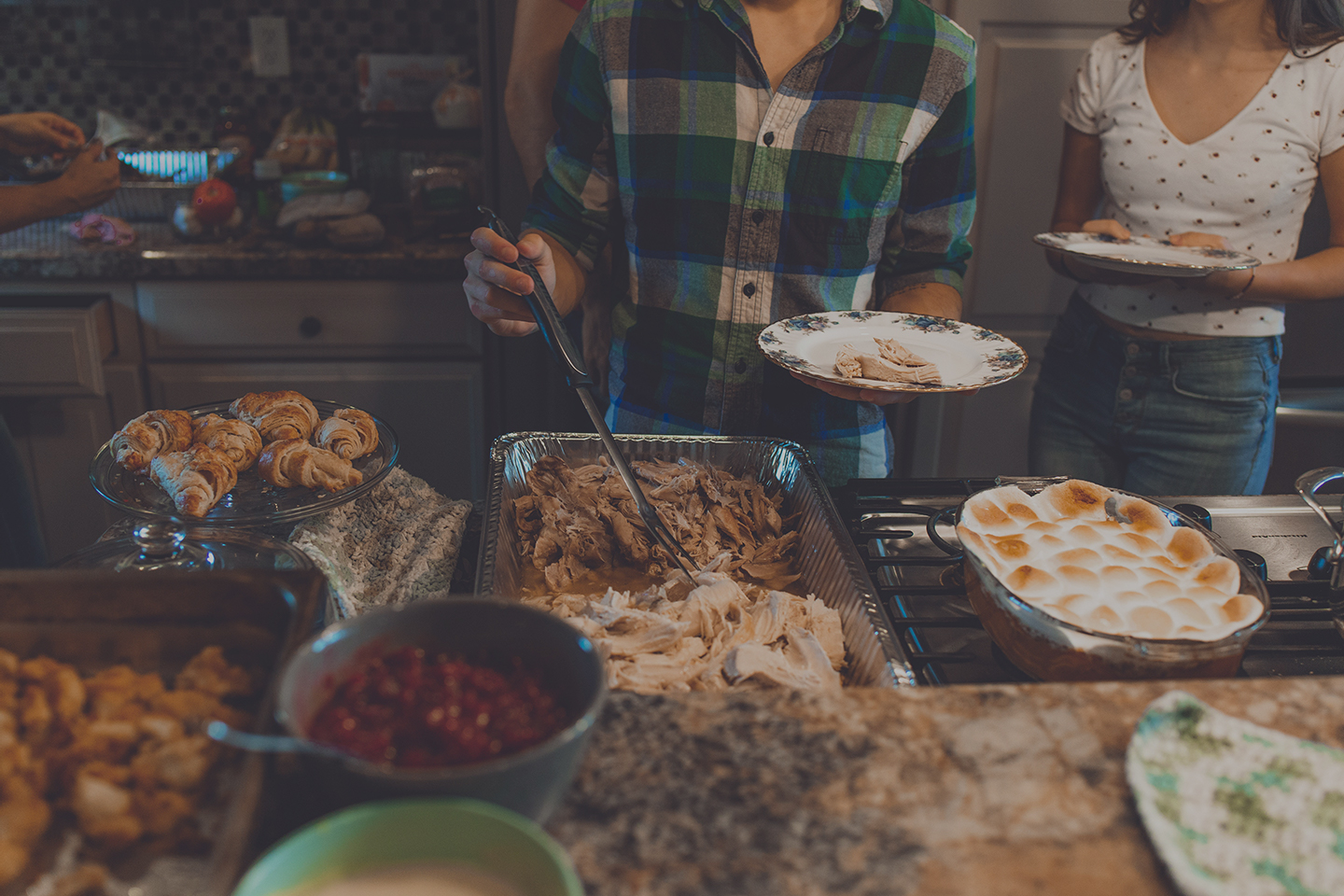
Tips for Making the Most of This Holiday Season With Diabetes
For people living with diabetes, the holidays can seem like a food marathon, with one meal running into the next. Here are some tips and tricks for making it to the finish line.
Traveling For The Holidays With Diabetes
Expectation #1:
When traveling from table to table, there will always be traffic and delays. So before you leave home, check that you have all your essentials and a few extras, just in case of breakage, device malfunctions, higher insulin needs, etc. Essentials may include:
- Glucose testing supplies (i.e., continuous glucose sensor, transmitter, and/or glucometer, test strips, lancets, lancing device)
- Your favorite low blood sugar emergency snacks
- Insulin and methods of delivery (i.e., vials and syringes, pens and needles, inhaled insulin, or pump pods/infusion sets and remote)
- Oral diabetes medications
- Alcohol swabs
Sitting in traffic with a low blood sugar and no snacks, or getting to your destination and realizing you forgot your medical supplies, can turn your happy holiday into a not so happy one really fast. Create your checklist (of whichever supplies you use to manage your diabetes) the night before the festivities, and tape it to your door so you can check everything off before you go.
What People With Diabetes Can Do
Expectation #2:
There will always be one person who will ask, “Can you eat that?” or the more extreme person who smacks the food out of your hand and scolds, “You can’t eat that!” You’re not alone; both scenarios have happened to me.
Instead of getting mad, I find comfort in this post from @thediabeticjourney, “The greatest pleasure I get in this life with type 1 diabetes is doing what people say I can’t do.” We can eat anything, but we have to be very conscious about the ingredients, the portions, and how they will impact our blood sugars. It’s fascinating how many apps and devices there are nowadays to do just that. It’s also great to let someone know what to do in case of an emergency. The more the merrier.
Eating And Drinking With Diabetes
Expectation #3:
There will be different types of food, possibly alcohol, with zero nutrition fact labels to guide you. When I was first diagnosed, I thought I only had 2 options:
- Panic and sadly watch everyone else enjoy the meal and desserts while I had a salad
- Take a wild guess at how much insulin I needed to cover myself, eat everything and settle with high blood sugars for the rest of the season
But over the years, I learned a few tricks to stay on track:
- Ask your host for a list of dishes. The list may change on the day of, but you’ll have a better idea of what to expect, rather than feeling rushed to figure it all out when it’s time to sit down and eat.
- Bring your own dish. It’s the one dish you can count on. You know the ingredients and the expected impact on your blood sugars. This dish is your fallback plan.
- Fearlessly ask the cooks, “what’s in the dish?” Then assess for yourself which ones you want to eat less or more of.
- Drinking alcohol (for those of legal age) can lead to unpredictable blood sugars. Sticking to one type of alcoholic beverage and pairing it with your meal can help.
- Skip the dinner rolls. Have that slice of once-a-year-famous-pie Aunt Serena makes instead.
- Get the CalorieKing app or ask Google how many carbs are in…while everyone has their own special recipe, the internet can help you figure out a ballpark of the amount of carbs you can expect in common holiday dishes.
- Adjust your insulin/medication settings accordingly to all the information available to you. Test blood sugars throughout the day, pace yourself, and have fun.
With the right preparation, the right attitude, and the ability to pace yourself, there’s nothing you can’t do.
For more resources on diabetes, check out our store.
Jumo Health develops age-appropriate, culturally relevant, and relatable educational resources for patients and caregivers. We have experience serving diverse populations, covering more than 160 health topics across 80+ countries in 120+ languages. Our various digital, video, and print offerings use highly visual elements and research-backed health literacy strategies to ensure that everyone can understand and act upon complex medical information. We do this through familiar mediums – from comic books and animation, to virtual reality experiences and authentic documentary-style patient stories – all customized based on audience. Jumo Health collaborates globally with more than 180 advocacy groups and community organizations to promote access and to ensure unique patient experiences are accurately represented.

